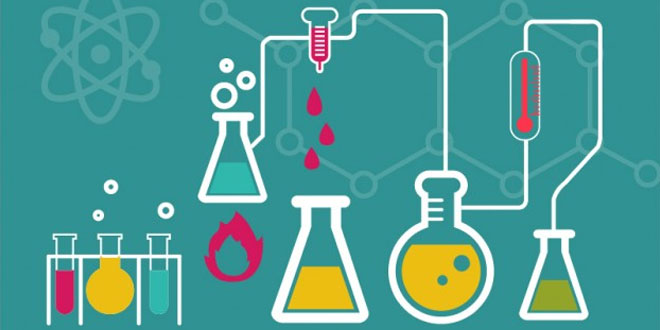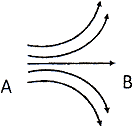10th Science Periodic Test III (2018-19) VGS Rohini
Time: 3 hours
M.M: 80
Subject: Science
Class: X
Date: 25/01/2019
General Instructions:
- The question paper comprises five sections, A, B, C, D and E. You are to attempt all the sections.
- All questions are compulsory.
- Internal choice is given in sections B, C, D and E.
- Question numbers 1 & 2 in Section – A are 1 mark question. They are to be answered in one word or in one sentence.
- Question numbers 3 to 5 in Section – B are 2 marks questions. These are to be answered in 30 words each.
- Question numbers 6 to 15 in Section – C are 3 marks questions. These are to be answered in 50 words each.
- Question numbers 16 to 21 in Section – D are 5 marks questions. These are to be answered in 70 words each.
- Question numbers 22 to 27 in Section – E are based on practical skills. Each question is a two marks question. The are to be answered in brief.
Section A
Question: 1. What is the phenotypic ratio of F2 in a mono-hybrid and dihybrid cross. [1]
Question: 2. Figure shows a non-uniform magnetic field in a region of space. Which region depicts strong magnetic field? Give reason for you answer. [1]
Section B
Question: 3. List two possible ways in which a concave mirror can produce a magnified image of an object placed in front of it. State the difference, if any, between the two images. [2]OR
A ray of light enters into benzene from air. If the refractive index of benzene is 1.50, by what percent does the speed of light reduce on entering the benzene? [2]
Question: 4.
(a) How does the resistivity of a conductor changes on increasing temperature?
(b) Two wires A and B have equal lengths and equal resistances. Which wire is thicker? Given that resistivity of wire A is lower than that of wire B. [2]
Question: 5.
(a) Mention the nature of toothpastes. How do they prevent tooth decay?
(b) What is a universal indicator? [2]
Section C
Question: 6. State the meaning of the term “hot spot” in the context of earth crust. Write one advantage and one limitation of utilizing energy obtained from the hot spots. [3]
Question: 7. What is meant by power of a lens? You have three lenses L1, L2 and L3 of powers +10D, +5D and -10D respectively. State the nature and focal length of each lens. Explain which of the three lenses will form a virtual and magnified image of an object placed at 15 cm from the lens. [3]
OR
An object of height 5 cm is placed perpendicular to the principal axis of a concave mirror whose radius of curvature is 20 cm. If the distance of the object from the mirror is 15 cm, determine the position, nature and size of the image formed.
Question: 8.
(a) What is the shape of a current-carrying conductor whose magnetic field pattern resembles that of a bar magnet?
(b) Draw a labelled diagram of an a.c generator.
Write the role of the following components.
(i) armature coil.
(ii) strong magnet. [1+2]
Question: 9.
(a) If we cut the tail of a mouse, will tail occur in next generation of that mouse? Give reasons to support your answer.
(b) What are the features Archaeopteryx had in common to the reptiles. [2+1]
OR
How has the method of artificial selection by humans helped in the evolution of different vegetables? Explain in brief giving an example.
Question: 10. Explain vegetative propagation with the help of two examples. List two advantages of vegetative propagation. [3]
Question: 11. What measures have been taken for the conservation of wildlife? State any three measures. [3]
Question: 12. Explain feedback mechanism for hormonal regulation with the help of an example. [3]
Question: 13. (i) Curd is not kept in copper and brass utensils. Why?
(ii) 10mL of solution of sodium hydroxide is completely neutralized by 8ml sulphuric acid solution. If we take 20ml of the same sodium hydroxide solution, what will be the amount of sulphuric acid solution required to neutralize it? Name the salt formed inn this reaction.
(iii) How is baking powder formed? Write reaction involved. [1×3 = 3]
Question: 14. (i) Identify the oxidizing agent in the following reaction:
(a) Fe2O3 + 3CO → 2Fe + 3CO2
(b) MnO2 + 4HCl → MnCl2 + 2H2O + Cl2
(ii) Lead nitrate solid on heating releases a brown colour gas X and a colorless gas Y. Name the two gases X and Y and also write a completely balanced equation for the same. [1+2]
Question: 15. (i) What are amphoteric oxides? Given two examples.
(ii) An ore on treatment with dilute HCl produces brisk effervescence which on passing trough lime water turns it milky. What step will be required to obtain metal from the enriched ore? [1+2]
Section D
Question: 16.
(i) The ciliary muscles of a normal eye are in their
(i) most relaxed
(ii) most contracted state.
In which of the two cases is the focal length of the eye-lens more.
(ii) Name the mirror that is used:
(a) by a dentist for examining teeth.
(b) for surveillance in shopping malls.
(iii) A person suffering from an eye-defect uses lens of power +1.5D. Name the defect he is suffering from. What is the focal length and nature of the lens.
(iv) What will be the colour of the sky for an astronaut is a space station? Give reason for your answer. [1+1+2+1]
OR
(i) What is meant by the term ‘power of accommodation’? Name the component of eye that is responsible for the power of accommodation.
(ii) A student sitting at the back bench in a class has difficulty in reading. What could be his defect of vision?
Draw ray diagrams to illustrate the image formation of the blackboard when he is seated at the
(i) back seat
(ii) front seat.
State one possible cause of this defect. Explain the method of correcting this with the help of a ray diagram. [1.5 + 3.5]
Question: 17.
(i) Draw a circuit diagram of an electric circuit containing a cell, a key, an ammeter, a resistor of 6Ω in series with a combination of two resistors (8Ω each) in parallel and a voltmeter across parallel combination. Each of them dissipate maximum energy and can withstand a maximum power of 24W without melting. Find the maximum current that can flow through the three resistors.
(ii) Calculate the ratio of equivalent resistance of a series combination of ‘n’ number of identical resistors to the parallel combination of the same type of ‘n’ number of resistors. [2.5+2.5]
Question: 18.
Groups 1
2 13
14 15
17 18
Period 2 A
E
F G
Period 3 C
B H
D
In the above, the positions of eight elements are given in the modern periodic table. On the basis of it, answer the following questions:
(i) Name the element which forms covalent bonds only.
(ii) Name the element which is a non-metal with valency 3.
(iii) Out of C and B, whose atomic radius is bigger and why?
(iv) Write chemical formula of a compound formed by elements H and F.
(v) Write the under the number of valenced electrons of G along with its valency. [1×5 = 5]
OR
Explain giving justification the trends in the following properties of elements, on moving from left to right in a period, in the Modern Periodic Table.
(a) Variation of valency
(b) Change of atomic radius
(c) Metallic to non-metallic character.
(d) Electronegative character.
(e) Native of oxides.
Question: 19.
(i) Draw structural isomers of pentane.
(ii) A mixture of oxygen and ethyne is burnt for welding. Can you tell why a mixture of ethyne and air is not used?
(iii) Draw electron dot structure of propanone.
(iv) Write a reaction to convert ethanoic acid.
(v) Give a test used to distinguish chemically between butter and cooking oil. [1×5 = 5]
Question: 20.
(a) Draw a longitudinal section of a flower and label the following parts: [5]
(i) Part that produces pollen grain.
(ii) Part that transfers male gametes to the female gametes.
(iii) Part that is sticky to trap the pollen grain.
(iv) Part that develops into a fruit.
OR
(a) Differentiate between pollen grains and ovule.
(b) State is brief the functions of the following parts of the human female reproductive system.
(i) Ovary
(ii) Fallopian tube
(iii) Uterus
Question: 21.
(a) How many times the blood goes through the heart during one cycle in fish and why?
(b) List the respiratory pigment present in our body? Where is it present?
(c) Why valves are present in heart and veins? [1+2+2]
Section E
Question: 22. Draw the ray diagram when white light is incident on a glass prism. Mention clearly the colors which get least and most deviated. Give reason for this. [2]
Question: 23. Draw a V-I graph based on the following data:
V (in volts)
1
2
3
4
5
I (in amp)
0.5
1.0
1.5
2.o
2.5
 Class Notes NCERT Solutions for CBSE Students
Class Notes NCERT Solutions for CBSE Students






